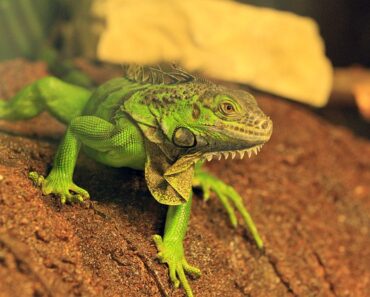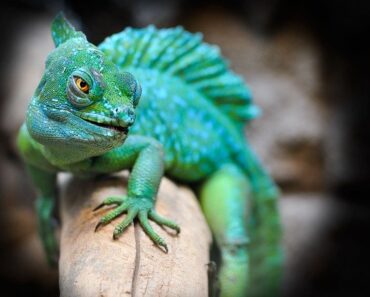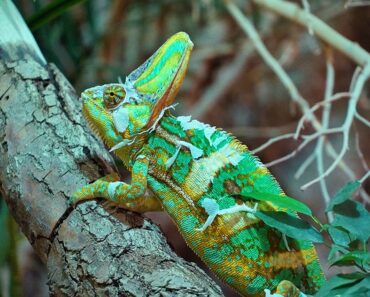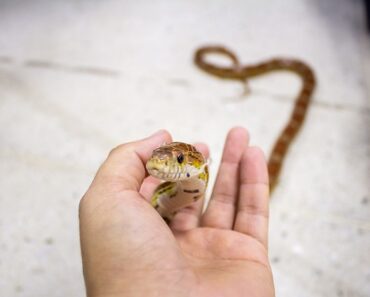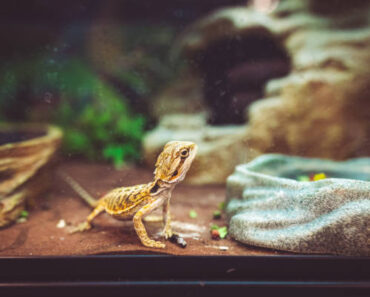
The hibernation corresponds to a slowing down of the metabolism of the ground turtle, that is to say a slowing down of all the biological functions (of its organs, its cells…) and biochemical (enzymes…) carried out by the organism. It is thus a question of saving energy to be able to pass the cold season without eating.
Turtles are reptiles known as poïkilothermic reptiles, or cold-blooded animals: their body temperature varies according to the temperature of the environment where they are. This is a fundamental difference with mammals, which are homeothermic because their body temperature remains relatively constant.
Hibernation is a complex natural process that turtles have possessed for millennia. However, when a turtle is taken out of its natural habitat, it can become disoriented and hibernation can be disrupted, which can be fatal for the animal.
How does hibernation occur in the turtle?
The different species of turtles come from different parts of the world. As the climate is not the same between these regions (length of winter, extreme temperatures…), each species of turtle does not have the same length of hibernation. For example, some turtles originating from Africa do not hibernate because the climate is always warm throughout the year there.
Among the most common species in France, hibernation classically takes place between November and March:
- The Hermann’s Turtle (Testudo hermanni) and the Greek Turtle (Testudo graeca) are turtles accustomed to the mild climate of the Mediterranean, i.e. relatively short winters with mild temperatures. Their hibernation period is from November to March. If these species live in the North of France, where the winter is longer and harsher, it is preferable to keep these turtles in a terrarium in the winter so that they remain active longer. Indeed, a too long period of hibernation is not beneficial for them.
- The Greek or Turkish turtle (Testudo graeca iber) and the Horsfield turtle or Steppe turtle (Testudo horsfield) are more resistant to environmental conditions and can stay outside all year round because they are native to regions where winter takes place like in France. It is however necessary to prepare your land for hibernation.
There are many other species of turtles that have their own hibernation characteristics. It is therefore important to know them when you acquire one of these turtles. Some have another process called wintering: they do not sleep (do not hibernate) but still have very little activity.
The different stages of hibernation
Pre-hibernation
During this phase, the turtle gradually decreases its nutrient intake and eventually stops feeding so that its digestive system is empty of all food. This is fundamental because the slightest residue of food stagnating in the digestive tract can rot/mould and thus cause the turtle’s death.
Practical aspect: For turtles living in terrariums, it is therefore important to gradually reduce the food given to the turtle when it arrives in winter and then to stop it completely before hibernation.
Caution: Never put a sick or weakened, injured or too thin turtle into hibernation. It is therefore important to check the state of health of your turtle and to administer preventive treatments accordingly (for example, deworming). Ask your veterinarian for advice as you approach the hibernation phase.
The hibernation
This is the phase when the turtle is “completely slowed down”. This period depends on the temperature which is an essential parameter to take into account. Indeed, if it is too cold or too hot, it will disturb the hibernation process and can even kill the turtle. The optimal hibernation temperature is between 5 and 7 °C. It is dangerous for the animal if the temperature approaches 0°C. If the temperature rises too much (above 10°C, as it can happen in winter), the turtle can then come out of hibernation for a few days but this is not desirable.
- Indoor hibernation: these are the previously mentioned turtles that cannot live all year round outside or turtles that live all year round in a terrarium.
Practical aspect: In this case, it is preferable to build a shelter for the turtle, for example with a wooden crate. It is possible to put several individuals in the same crate (of suitable size). The contents of the crate are divided into 3 successive layers. The 1st layer is composed of a layer of earth compact and important enough to serve as thermal insulation. The 2nd layer must be composed of loose, uncompacted soil (peat, compost, …) so that the turtle can dig and sink into it. The last layer will be composed of a thin layer of soil covered with leaves or straw. Do not forget to add a bowl of water in case the turtle wakes up.
Do not forget that the temperature is an essential factor to control and therefore the turtle should ideally be in a room that remains between 5 and 10 °C, away from noise and light. Moreover, it is not advisable to disturb the turtle during its hibernation, even to measure its weight.
Attention: It is fundamental that the top of the box is covered with a mesh or a cover (with holes for ventilation) to protect the turtle, which is vulnerable during the hibernation phase. Indeed, rodents and cats are responsible for the death of turtles that hibernate every year.
Another method is to put the turtle in a refrigerator. However, this method is risky because it is absolutely necessary that the fridge lets air through, and it is necessary to remember to check regularly that the turtle is not awake.
- Outdoor hibernation: This is only possible with turtle species that are able to withstand the temperature variations of winters in France.
It is important to be well prepared when the cold season approaches because the turtle can bury itself in a corner of the garden and then be difficult to locate. It is important to check the turtle’s good health before the hibernation process in order to avoid any complications.
Practical Aspects: Since the turtle buries itself to hibernate, it may be wise to dig up the soil to soften it and to remove large stones that could hinder it. Once the turtle is in hibernation, it is important to protect the place with a screen or a ventilated box to protect it from bad weather and possible predators (cats, rodents…). One can also cover the area with dead leaves and a little earth to reinforce the protection around the turtle. Finally, do not forget to indicate the place of hibernation of your turtle with a stake for example in order not to forget it and not to have unfortunate gestures (blow of shovel, mower…).
The alarm clock
It is also an important stage, which takes place at the end of winter. For turtles hibernating indoors, it is especially important to avoid thermal shocks by gradually increasing the temperature of the room where it is located for 3 weeks to about fifteen degrees. For the turtles hibernating outside, it is judicious to begin to clear the hibernation zone. Then a check-up of its state of health is advised before putting it back in its place of life.


